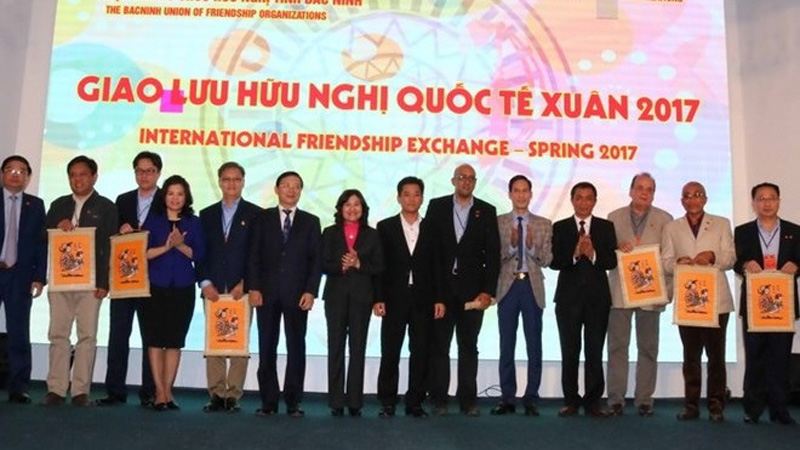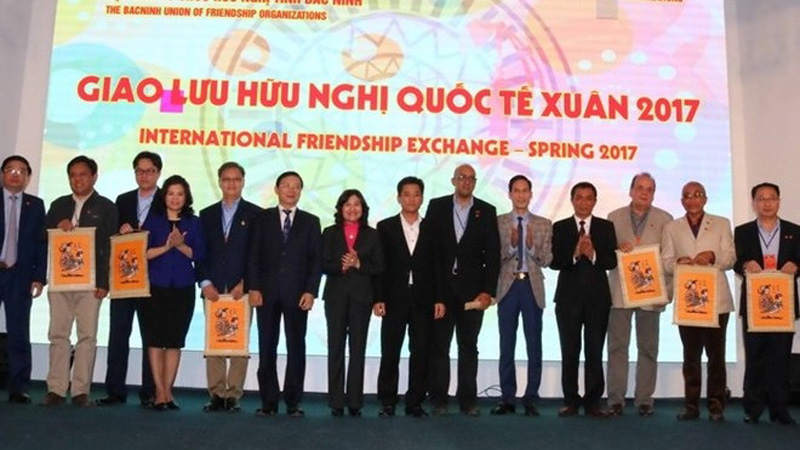
The Friendship Journey 2018 was held in the northern province of Thai Nguyen on March 10, gathering nearly 300 delegates who are ambassadors and officials of embassies of various countries in Vietnam, and representatives of friendship associations, international and non-governmental organisations in Vietnam.

The Friendship Journey
aims to foster friendship between the delegates and Vietnamese people.
Held by the Vietnam Union of Friendship Organisations
(VUFO), the event aimed to foster friendship between the delegates and
Vietnamese people, especially locals in Thai Nguyen.
Participants visited the Museum of Vietnam Ethnic Groups'
Cultures where they explored six cultural regions of Vietnam from the north to
the south, as well as typical festivals, customs and traditional practices of
each region.
They were also introduced to unique traditional arts of
Vietnam, including water puppet, water carrying dance of Cham people, and
musics of Khmer and H'Mong communities.
Visiting the Tan Cuong tea culture space centre and the
ecology tea village in Thai Nguyen, the delegates had chances to experience tea
processing methods as well as special cultural practices of Thai Nguyen tea
growers in the famous tea production hub of Tan Cuong.
On the occasion, they
planted trees in the Museum of Vietnam Ethnic Groups’ Cultures.
Source: VNA
With an increasingly vibrant and widespread emulation movement aimed at building cultured residential areas and cultured families, Yen Thuy District has been making steady progress toward improving both the material and spiritual well-being of its people, while fostering a civilized, prosperous, beautiful, and progressive community.
Once lacking recreational spaces and community facilities, Residential Group 2 in Quynh Lam Ward (Hoa Binh City) has recently received attention for the construction of a new, spacious, and fully equipped cultural house. The project followed the model of state support combined with public contributions in both labor and funding.
The "All people unite to build cultural life" movement, which has been effectively integrated with Kim Boi district’s socio-economic development goals, is fostering a lively spirit of emulation across local residential areas, hamlets, villages, public agencies, and enterprises. In addition, through the initiative, traditional cultural values are being preserved and promoted, while community solidarity and mutual support in poverty reduction and economic development are being strengthened.
A working delegation of the Hoa Binh provincial People’s Committee led by its Permanent Vice Chairman Nguyen Van Toan on June 11 inspected the progress of a project to build the Mo Muong Cultural Heritage Conservation Space linked to tourism services in Hop Phong commune, Cao Phong district.
Born and growing in the heroic land of Muong Dong, Dinh Thi Kieu Dung, a resident in Bo town of Kim Boi district, in her childhood was nurtured by the sweet lullabies of her grandmother and mother. These melodies deeply imprinted on her soul, becoming an inseparable part of her love for her ethnic group's culture. For over 20 years, this love for her hometown has driven Dung to research, collect, and pass down the cultural values of the Muong people to future generations.
In the final days of May, the Ethnic Art Troupe of Hoa Binh Province organized performances to serve the people in remote, mountainous, and particularly disadvantaged areas within the province. These were not just ordinary artistic shows, but they were the meaningful journeys aimed at spreading cultural values, enhancing the spiritual life of the people and contributing to the preservation of ethnic minority cultural identities.



